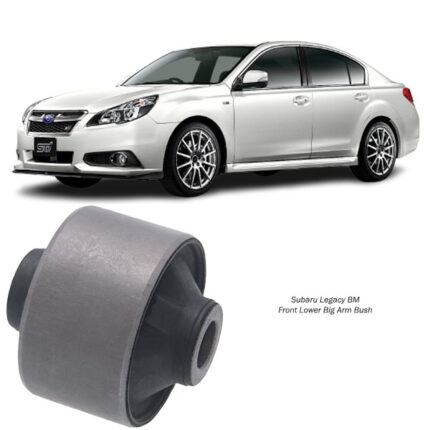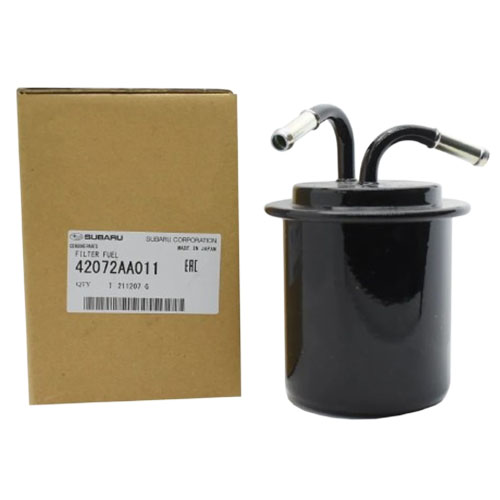Get Subaru Forester / Impreza / Legacy / Outback Fuel Filter Assy 42072AA011 in Kenya
The Fuel Filter Assembly is one of the most crucial components in a vehicle’s fuel delivery system. It plays a vital role in ensuring clean fuel reaches the engine, preventing contaminants from causing damage.
Over time, dirt, rust, and debris accumulate in fuel, making it essential to have a high-quality fuel filter to prevent engine issues. A clogged or failing fuel filter can lead to poor performance, engine misfires, and even complete stalling.
This guide will cover:
✔️ What is a Fuel Filter Assembly?
✔️ Functions & Importance
✔️ Symptoms of a Failing Fuel Filter
✔️ Types of Fuel Filters
✔️ How to Replace a Fuel Filter Assembly
✔️ Maintenance & Longevity Tips
✔️ OEM vs. Aftermarket Fuel Filters
What is a Fuel Filter Assembly? 🤔
A Fuel Filter Assembly is a filtration unit that removes impurities, dirt, and debris from the fuel before it reaches the engine. It consists of:
🔹 Fuel Filter Housing – The outer casing that holds the filter element.
🔹 Filter Element – The main component that traps dirt, rust, and debris.
🔹 Inlet & Outlet Ports – Channels where fuel enters and exits the filter.
🔹 Drain Valve (for some models) – Used to remove water and contaminants.
Functions & Importance of the Fuel Filter Assembly 🌍
The Fuel Filter Assembly plays a critical role in maintaining engine health and performance.
1️⃣ Filters Out Contaminants 🚗
-
Fuel contains dirt, metal particles, and rust from fuel tanks.
-
The filter traps these impurities, ensuring clean fuel reaches the engine.
2️⃣ Protects Fuel Injectors & Pump 🛢️
-
Dirt and debris can clog injectors, affecting fuel delivery.
-
A clean filter prevents damage to fuel system components.
3️⃣ Improves Engine Performance 🏁
-
Ensures the engine gets a steady flow of clean fuel.
-
Prevents hesitation, rough idling, and poor acceleration.
4️⃣ Increases Fuel Efficiency ⛽
-
A clogged filter reduces fuel flow, making the engine work harder.
-
Clean fuel improves combustion and fuel economy.
5️⃣ Extends Engine Life 🔬
-
Contaminated fuel can cause premature wear on engine components.
-
Regular filter changes help extend engine lifespan.
Symptoms of a Failing Fuel Filter 🚨
A clogged or failing fuel filter can cause various engine issues. Look out for these warning signs:
🔴 Hard Starting or No-Start Condition – A clogged filter restricts fuel flow, making it difficult to start the engine.
🔴 Engine Stalling – If the filter is completely blocked, the engine may stall unexpectedly.
🔴 Poor Acceleration & Power Loss – A dirty filter reduces fuel pressure, affecting acceleration and performance.
🔴 Engine Misfires or Hesitation – If the engine doesn’t receive enough fuel, it may misfire or hesitate when accelerating.
🔴 Check Engine Light (CEL) Activation – A restricted fuel filter can trigger a Check Engine Light due to fuel system errors.
🔴 Unusual Noises from the Fuel Pump – A struggling fuel pump makes whining or buzzing sounds when working harder due to a clogged filter.
If you notice any of these symptoms, it’s time to inspect and replace the fuel filter.
Types of Fuel Filters 🔬
There are different types of fuel filters depending on the vehicle and fuel system:
🔹 Inline Fuel Filter –
✔️ Located between the fuel tank and engine.
✔️ Common in older vehicles.
🔹 Cartridge Fuel Filter –
✔️ Uses a replaceable filter element inside a metal or plastic housing.
✔️ Common in diesel engines.
🔹 Spin-On Fuel Filter –
✔️ Similar to an oil filter, easy to replace.
✔️ Used in trucks and heavy-duty vehicles.
🔹 In-Tank Fuel Filter –
✔️ Located inside the fuel tank.
✔️ Usually part of the fuel pump assembly.
For Mazda, Toyota, and most modern vehicles, inline or in-tank fuel filters are commonly used.
How to Replace a Fuel Filter Assembly 🛠️
🛠️ Tools Required:
✔️ Wrench Set
✔️ Fuel Line Disconnect Tool
✔️ Catch Pan (for fuel spills)
✔️ Safety Glasses & Gloves
🔧 Installation Steps:
1️⃣ Relieve Fuel Pressure
-
Locate the fuel pump fuse and remove it.
-
Start the engine and let it run until it stalls.
2️⃣ Locate the Fuel Filter
-
Usually found along the fuel line or inside the tank.
-
Check the owner’s manual for exact location.
3️⃣ Disconnect Fuel Lines
-
Use a fuel line disconnect tool to remove the hoses.
-
Be cautious of fuel spills.
4️⃣ Remove the Old Filter
-
Loosen the mounting bolts and take out the old filter.
5️⃣ Install the New Fuel Filter
-
Ensure the flow direction matches the arrows on the filter.
-
Tighten all connections securely.
6️⃣ Reconnect Fuel Lines & Prime the System
-
Reattach the fuel lines and tighten the clamps.
-
Turn the ignition ON/OFF a few times to prime the fuel system.
7️⃣ Check for Leaks & Start the Engine
-
Inspect for fuel leaks before driving.
Maintenance & Longevity Tips 🔄
To ensure optimal fuel filter performance, follow these maintenance tips:
✅ Replace Every 20,000-40,000 Miles – Depending on fuel quality and driving conditions.
✅ Use High-Quality Fuel – Prevents excess debris and contamination.
✅ Inspect Fuel Lines Regularly – Look for cracks or leaks.
✅ Replace with OEM or High-Quality Aftermarket Filters – Ensures proper filtration and fitment.
OEM vs. Aftermarket Fuel Filters – Which One to Choose? 🤷♂️
| Feature | OEM | Aftermarket |
|---|---|---|
| Fit & Compatibility | ✅ Perfect Fit | ⚠️ May Require Adjustments |
| Filtration Efficiency | ✅ High | ⚠️ Varies by Brand |
| Durability | ✅ Long-Lasting | ❌ May Wear Faster |
| Warranty | ✅ Manufacturer-Backed | ❌ Limited or None |
| Cost | ❌ More Expensive | ✅ More Affordable |
For best performance, OEM fuel filters are recommended for Mazda, Toyota, and other modern vehicles.
Final Thoughts 💡
The Fuel Filter Assembly is a small but essential component for ensuring clean fuel reaches your engine. Regular replacement is crucial to avoid performance issues, injector damage, and costly repairs.
Follow us on Facebook for more parts.




Reviews
Clear filtersThere are no reviews yet.